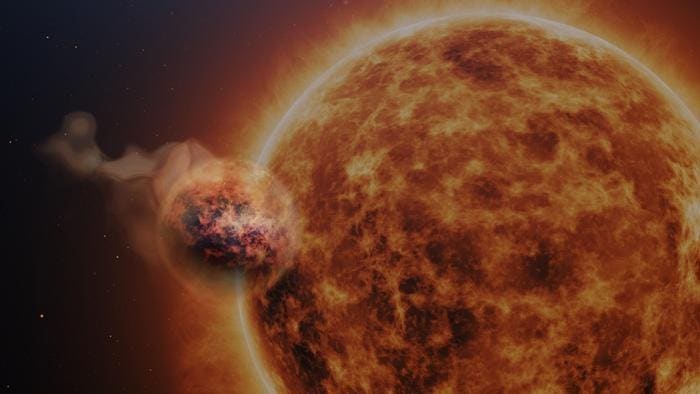Astronomers using NASA’s James Webb Space Telescope have revealed a planet just 200 light years from the solar system where it rains sand and smells of a just-struck match.
WASP-107b, in the constellation Virgo, is a gas giant exoplanet—a planet that orbits a star other than our sun—about the same mass as Neptune, but far larger. This lack of density, called “fluffy” by scientists, made it possible for astronomers to look deeply into its atmosphere, where they discovered water vapor, sulfur dioxide and silicate sand clouds. However, they found no trace of methane, which is thought to be an essential biosignature to search for life on exoplanets.
Pivotal Milestone
“The discovery of clouds of sand, water, and sulfur dioxide on this fluffy exoplanet by JWST’s MIRI instrument is a pivotal milestone,” said Prof. Leen Decin of the Institute of Astronomy, KU Leuven in the Netherlands, lead author of a paper published this week in the journal Nature. “It reshapes our understanding of planetary formation and evolution, shedding new light on our own solar system.”
MIRI looks at planets in infrared and has a spectrograph that splits light into its component colors. That allows scientists to analyze the light and find the tell-tale signs of certain gases and chemicals. WASP-107b’s fluffy nature made this much easier than on more dense exoplanets simply because the signals are more prominent in a less dense atmosphere.
Major Surprise
Their discovery of the poisonous gas sulfur dioxide—which smells of a burnt match—was described as a major surprise. However, its signals—and those of water vapor—were less than expected, revealing that WASP-107b has high-altitude clouds as hot as 500 degrees Celsius. The scientists were also able to identify the chemical composition of the clouds, a first for exoplanetary astronomy. They found small silicate particles—sand.
“The sand rain droplets evaporate in deeper, very hot layers and the resulting silicate vapor is efficiently moved back up, where they recondense to form silicate clouds once more,” said lead author Dr. Michiel Min, a senior scientist at the Netherlands Institute for Space Research (SRON). “This is very similar to the water vapor and cloud cycle on Earth, but with droplets made of sand.”
Transit Method
According to NASA, WASP-107b takes 5.7 days to complete one orbit of its star and is 0.055 AU from its star—5% of the distance between Earth and the sun. It was discovered in 2017 using the transit method, the detection of a slight dimming in a star’s light as a planet transits across it. About two-thirds of all exoplanets discovered so far were found that way, though it only works for exoplanets in star systems that we have a side-on line of sight to from Earth.
“JWST is revolutionizing exoplanet characterization, providing unprecedented insights at remarkable speed,” said Decin.
Wishing you clear skies and wide eyes.
Read the full article here





